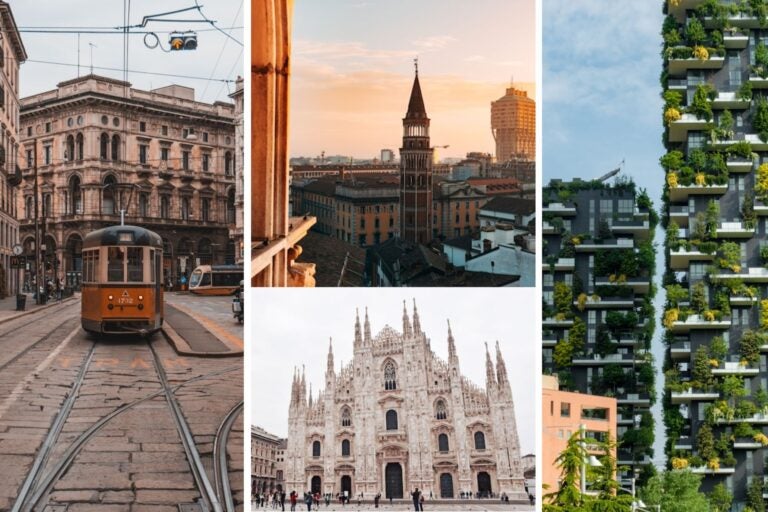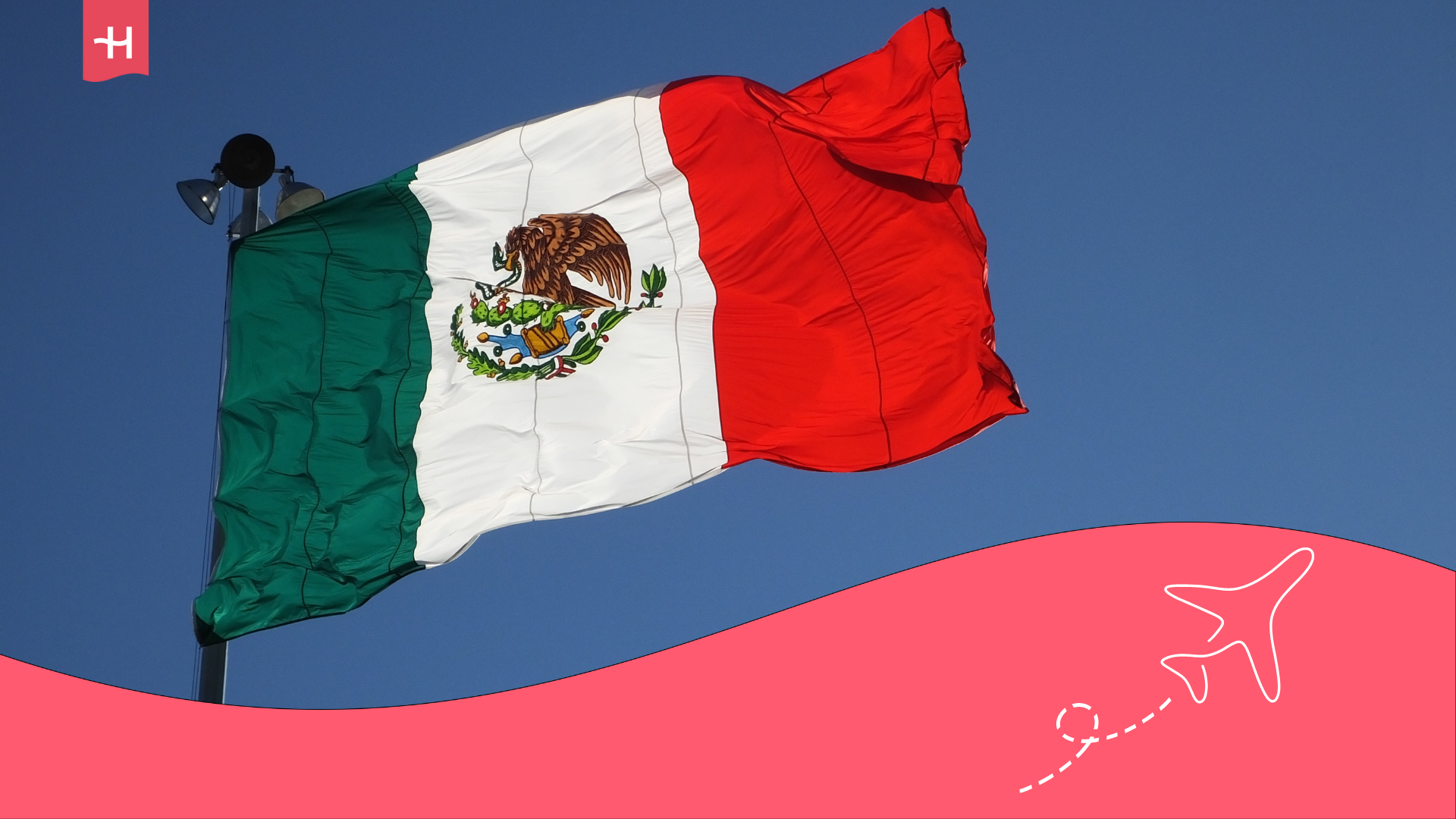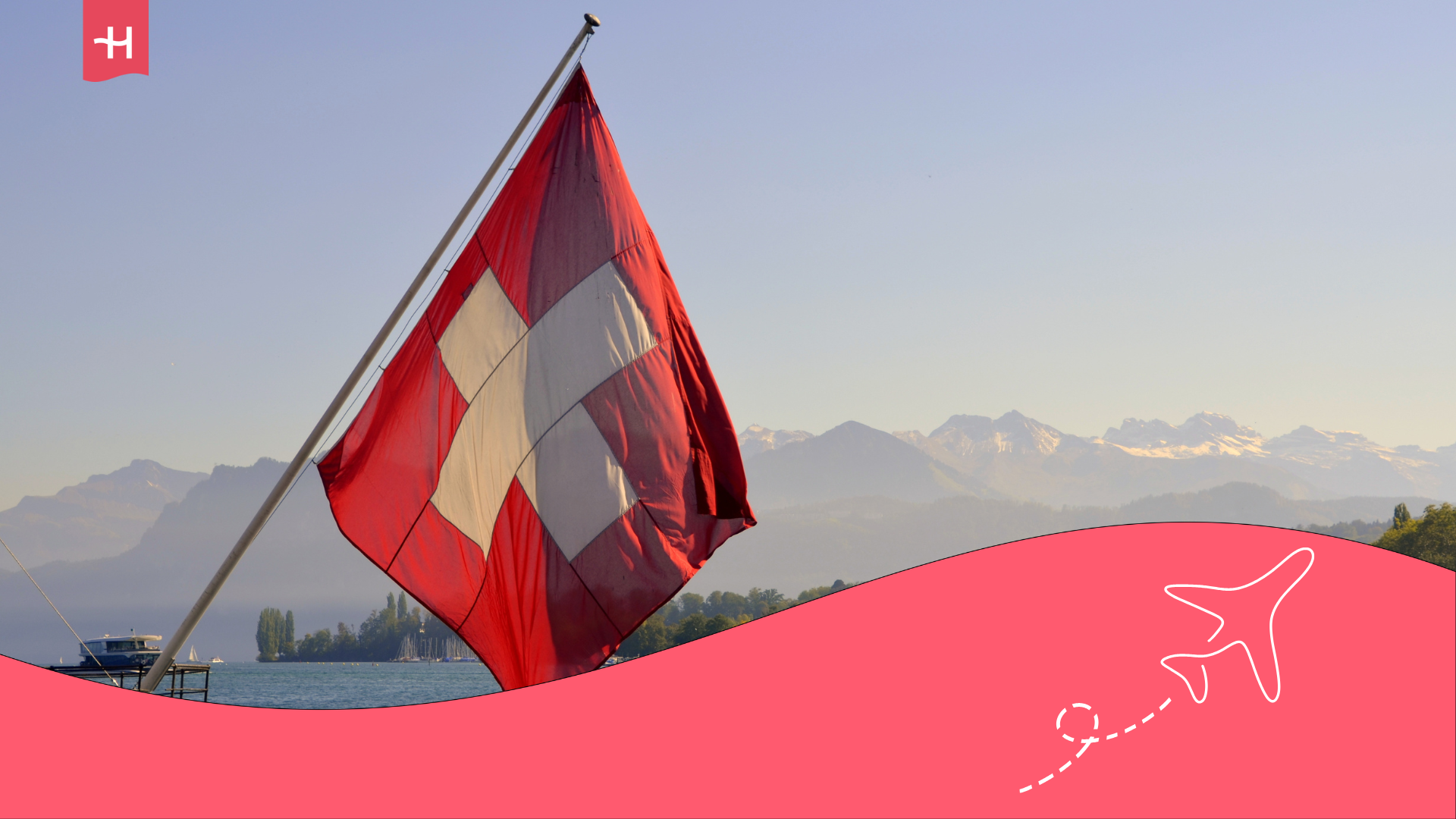Where to stay in Milan for long periods of time
Deciding where to stay in Milan can be difficult. That's why we have prepared a guide to help you make the best decision to suit your needs.
Milan is a true gem in northern Italy. This vibrant city, known for its fashion, design, and buzzing cultural scene, has plenty to offer beyond the typical tourist checklist. It’s an ideal spot for international students, digital nomads, or travelers looking to settle in for more than just a quick visit. After all, there’s so much more to discover than just the iconic Duomo or Da Vinci’s Last Supper. To really soak up the atmosphere and get to know Milan’s authentic side, it’s worth spending a bit more time here. And if that sounds appealing, the first step is finding a place to live. Not sure where to begin? No worries — that’s exactly what this guide to where to stay in Milan is here for.
Like in any major city, finding the right place to live in Milan can be a bit of a challenge — especially if it’s your first time here. That’s why we’re here to help you discover the best neighborhoods for a longer stay, and the types of accommodation that might suit your lifestyle best. For instance, if you’re a digital nomad, you might really enjoy the social and collaborative vibe of a coliving space. On the other hand, if you’re a student, you’ll probably appreciate having more privacy so you can focus on your studies.
Want to know the best area to base yourself and feel at home in one of the most vibrant cities in Europe? Read on, we’ll tell you all about it.
Where to stay in Milan for a period of time?
Milan is one of northern Italy’s top destinations. Located in the Lombardy region, close to the famous Lake Como and the Swiss Alps, it draws thousands of visitors from around the world every year. Alongside the tourists, the city also welcomes international students drawn by its universities, remote workers, digital nomads, and travelers using Milan as a base to explore the region. With so many people coming and going, finding a place to stay can definitely be a bit of a challenge.
If you’re planning to visit Milan in the spring or fall, it’s a good idea to book your accommodation several months in advance. Not only will you have more options to choose from, but you’ll also have a better chance of finding a good deal. These seasons are especially busy, as they attract a high number of tourists.
When it comes to choosing an area to stay in, it really depends on your personal preferences and needs. If you want to be right in the heart of Milan, look for places near the Central Train Station — from there, it’s about a 25-minute walk to the historic center. That central area is the most expensive part of the city to stay in, so it’s not the best option for long-term visits. A great alternative is the Brera district, just a 10-minute walk from the center, which offers more affordable options. The Navigli area, known for its picturesque canals, is also a good choice with a lively atmosphere and more budget-friendly places. If you’re after a quieter spot, the area around Sempione Park is worth considering. And if you’re drawn to Milan’s modern side, the Isola neighborhood is the place to be.
That said, let’s see where to stay in Milan for a while:
Coliving in Milan
In recent years, the concept of coliving has really taken off in Milan. These spaces, which blend accommodation, coworking areas, and a sense of community, are perfect for digital nomads, remote workers, and entrepreneurs. Not only do they offer everything you need to stay productive, but they also give you the chance to connect with like-minded people from all over the world — creating both personal and professional relationships along the way.
- The cost of coliving in Milan varies depending on factors like location and the type of room you choose. If you’re looking to save some money, a shared room is a budget-friendly option, with prices averaging around 500 euros per month ($540). But if privacy is a priority, you can go for a private room, which typically ranges from 700 euros to 1,100 euros ($760 to $1,200).
Furnished apartments
If you prefer more independence and complete privacy, renting a fully furnished apartment is a great option. Milan has plenty of studios and one- or two-bedroom apartments available for monthly rent, often with all services included — from Wi-Fi to cleaning and laundry. All you need to do is show up with your suitcase and get ready to enjoy your stay in Milan.
- The cost of this type of accommodation typically ranges from 900 euros to 1,400 euros ($980 to $1,500) for a studio or open-plan apartment. For a one-bedroom place, expect to pay between 1,200 euros and 1,800 euros ($1,300 to $1,950). It’s worth noting that these kinds of rentals are in high demand, so it’s a smart move to start your search a few months in advance.
Seasonal Airbnb
Airbnb is still a solid option for longer stays, especially if you use the “monthly discount” filter. Many hosts are used to welcoming medium- and long-term guests, and they often offer competitive rates on fully furnished apartments equipped with a kitchen, workspace, and reliable internet.
- The cost in this case also depends on the location, the length of your stay, and the amenities you’re willing to pay for. Studios or one-bedroom apartments typically range from 1,300 euros to 2,000 euros ($1,400 to $2,200), while larger apartments start at around 2,000 euros ($2,200) and go up from there.
Hotels for long stays
Staying in a hotel for an extended period isn’t usually the most cost-effective choice. However, in some cases, hotels offer special rates for long stays, with studio-style rooms that include a small kitchen, a desk, and additional services like laundry or access to coworking spaces. So, it’s worth considering if you’re looking for a combination of accommodation with added services.
- Hotel prices in strategic areas of Milan (like near the Central Train Station) can range around 120 euros per night ($130). Don’t forget to ask about discounts for long stays.
How to stay connected in Milan?
When you’re in Milan, you’ll definitely want to snap a photo with the iconic Duomo and stay in touch with your loved ones. To do that, you’ll need a reliable internet connection, whether it’s for work, video calls with clients, downloading study materials, or attending online classes. Essentially, having good internet is a must for any digital nomad, student, or remote worker.
Also, keep in mind that if you’re staying in Milan for several weeks or even months, you’ll need a stable connection not just at home, but also on the go — in cafés or while traveling around Europe. Luckily, there’s a simple solution for this: Holafly Connect.
With any of their plans (10 GB, 25 GB, or unlimited data), you’ll have a stable and secure connection the moment you land at Milan’s airport, with the added benefit of not having to change your eSIM each time you move to a new country. Holafly Connect offers coverage in over 170 destinations, including Italy and the rest of the European Union. So, if you’re planning weekend trips from Milan to cities like Paris, Barcelona, or Berlin, this is the most practical and efficient way to stay connected.
Important: If you are a frequent traveler and want to stay connected without worrying about expensive roaming or looking for a new SIM at every destination, Holafly’s subscription plans are for you. With a single eSIM, enjoy internet in more than 170 countries for a fixed price and no surprises on your bill. Travel without limits and connect easily and securely! 🚀🌍

Where to stay in Milan? The best neighborhood to live for a while
Before we dive into the best neighborhoods or areas to stay in Milan for an extended period, let’s quickly explain how the city is organized. First off, you should know that Milan is a large city divided into nine districts. The first district is the city center, which includes the historic area. The second district lies to the north of the center, and the others are arranged in a clockwise direction. Within these districts, you’ll find various neighborhoods.
We’ll focus on the areas that are truly practical for your experience as a digital nomad. Milan is a city full of contrasts, and each neighborhood has its own unique vibe, pace, and advantages. Below, we’ll highlight three of the best options for settling in for a few weeks or months, working from home or a coworking space, and enjoying everything this Italian city has to offer.
Navigli
Located in the heart of Milan, in District 1, the charming Navigli neighborhood stands out with its bohemian vibe and picturesque canals. While Venice is the most famous for its canals, Milan has its own waterway charm. Known for its relaxed atmosphere, Navigli is also a hotspot for nightlife and creativity. Many people are drawn to its artistic spirit, street markets, and the great opportunity to meet new people.
For those looking to balance work with a bit of sightseeing without straying too far from home, Navigli offers plenty to explore. You can visit the Naviglio Grande Canal, the heart of the neighborhood, where you can stroll, enjoy outdoor dining, and snap some great photos. The Mercato dell’Antiquariato and the charming streets filled with murals and artist workshops are also popular spots to check out.
As if that weren’t enough, it’s in a super central location (just a 15-minute walk from the Duomo) and is well-connected to the rest of the city via the M2 metro line (Porta Genova station), trams, and buses. Plus, it’s perfect for getting around by bike.
- Featured hotels in Navigli: Some aparthotels and residences in Navigli offer rooms with kitchens and amenities for long stays, though traditional hotels for this type of trip are less common.
- Recommended coliving spaces in Navigli: You’ll find places like Combo Milano, which mix accommodation, a bar, coworking spaces, and cultural events. They’re perfect if you’re looking for a sense of community and a great atmosphere.
- Furnished apartments in Navigli: In Navigli, you’ll find modern studios with views of the canal, as well as larger apartments in historic buildings. However, it’s a highly sought-after area, so it’s a good idea to book in advance.
Porta Romana
Another great area to stay in Milan is Porta Romana, a neighborhood in District 4 that offers a blend of elegance, tranquility, and easy access to the city center. It has parks and green spaces, charming cafés, and a peaceful atmosphere perfect for those who appreciate calm without being far from the action. It’s also home to some popular attractions, like the Milan Thermal Baths, an urban spa where you can unwind after a busy day of work. Porta Romana also features the Parco della Resistenza and the Fondazione Prada Museum.
Porta Romana is well-connected by the yellow metro line (M3), which takes you to the Duomo in under 10 minutes. It also has tram lines and public bikes available.
- Featured hotels in Porta Romana: The neighborhood has modern aparthotels equipped with all the amenities for long stays, including kitchens, workspaces, and laundry services.
- Recommended Coliving Spaces in Porta Romana: Options like Roomless or Nestpick offer private rooms with shared spaces, perfect for those looking for a functional and modern environment.
- Furnished apartments in Porta Romana: One of the areas with the largest offer of temporary rentals, from studios to family apartments, all well equipped and in residential settings.
Isola, another neighborhood in Milan
If you prefer to stay in Milan’s more modern, futuristic side, you’re in for a treat. This city isn’t just rich in history and art—it’s also home to one of the coolest neighborhoods in the world: Isola. With its innovative architecture and lively cultural scene, it’s a great spot for creatives, entrepreneurs, and remote workers looking for an inspiring place to be.
It’s worth noting that Isola isn’t one of the cheapest areas in the city, but we’ve highlighted it for workers who appreciate this type of environment. The reason for its higher prices is the significant transformation it’s undergone in the last 15 years. As a result, Isola now boasts vibrant street art and a perfect blend of the old and new, with stylish buildings alongside beautifully renovated historic homes.
Isola is home to standout attractions like the Bosco Verticale, Piazza Gae Aulenti, and Parco Biblioteca degli Alberi, as well as several markets and independent art spaces. When it comes to connectivity, the M5 metro line, suburban trains, and several bus routes provide quick access to the city center. Plus, areas like Brera and Garibaldi are within walking distance.
- Featured hotels in Isola: Some boutique hotels and apart-hotels offer long-stay rates, with kitchens, work spaces and modern design.
- Recommended coliving spaces in Isola: The Social Hub Milan is one of the most comprehensive coliving spaces in the city, offering accommodation, coworking, a gym, a restaurant, and networking events—all in one place.
- Furnished apartments in Isola: Most of them are modern, bright, and well-designed. While prices may be higher than in other areas, the quality of the surroundings makes it worthwhile.

Now that you know where to stay in Milan, it’s time to consider your needs, budget, and start planning your move to this charming city. It’s a place filled with art, history, fashion, luxury cuisine, and so much more.
Frequently asked questions about where to stay in Milan
Most short-term rentals in Milan require a minimum stay of 30 days, especially when it comes to furnished apartments or coliving spaces. That said, there are also options like residences and certain colivings that offer weekly stays—perfect if you’re just passing through or haven’t decided how long you’ll stay. On Airbnb, many hosts offer discounts starting from one-month bookings.
Yes, Milan is quickly becoming a hotspot for coliving. In recent years, a variety of options have popped up to suit different lifestyles—from budget-friendly, community-oriented spaces for students and freelancers to premium residences that include coworking areas, gyms, and social events. Neighborhoods like Isola, Navigli, Porta Romana, and Lambrate have the highest concentration of coliving spaces. Plus, platforms like The Social Hub, Roomless, Uniplaces, and HousingAnywhere make it easy to search and book with just a few clicks.
If you’re someone who values peace and quiet to stay focused, Porta Romana is a great choice. The same goes for neighborhoods like Lambrate and Città Studi—they offer a calm vibe, away from the hustle and bustle of the city center, but still have great connections. On the other hand, areas like Navigli and Brera are livelier and more vibrant.
Yes—especially if you’re looking for a private, furnished space with a flexible lease. Many hosts offer discounts for stays longer than a month and don’t require much paperwork. It’s also a convenient option if you’ve just arrived in Milan and need a place to settle into quickly while you look for something more budget-friendly. Just make sure to compare prices across platforms—sometimes Airbnb includes extra fees that you could avoid by booking directly.
First things first—Milan isn’t exactly a cheap city (in fact, it’s one of the most expensive in Italy). That said, with smart budgeting, it’s totally possible to live comfortably without breaking the bank. Rent in colivings or shared apartments usually ranges from 600 euros to 900 euros ($680-1,020) a month, while a private studio or furnished flat can go from 1,000 euros to 1,500 euros ($1,140-1,700) , depending on the neighborhood. On top of rent, you’ll need to budget for food, transport, activities, and health insurance, bringing the average monthly cost to around 2,000 euros ($2,270).





 Language
Language 


















 No results found
No results found








